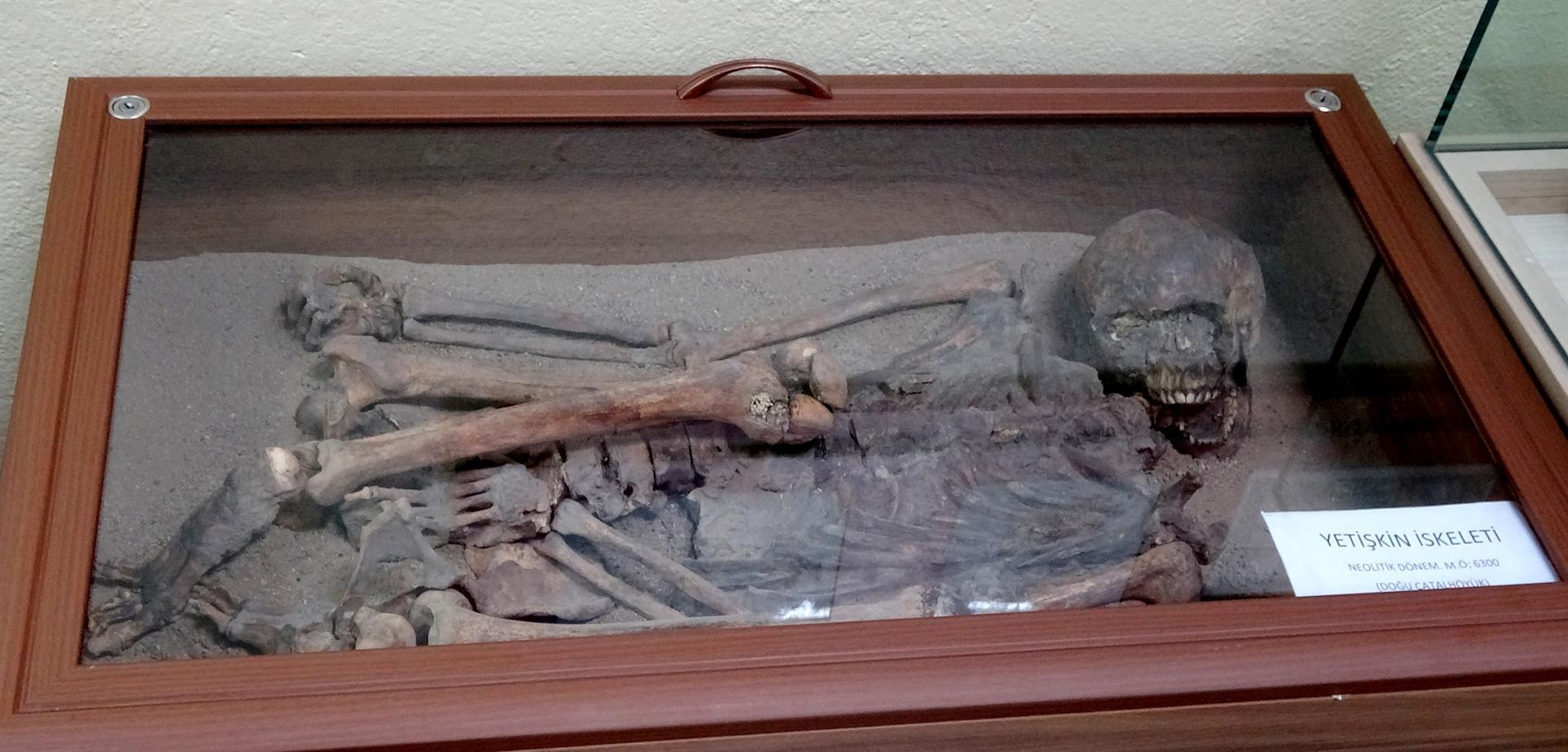Çatalhöyük skeletons draw museum visitors
KONYA - DHA

Human skeletons unearthed during excavations at the 9,000 year-old ancient settlement of Çatalhöyük are on display at the Archaeology Museum in the Central Anatolian province of Konya.
Excavations were carried out in Çatalhöyük between 1961 and 1963 and in 1965 following archaeologist James Mellaart’s discovery of the settlement in 1958. After a long hiatus excavations recommenced in 1993 under the auspices of Stanford University staff member Professor Ian Hodder.
Çatalhöyük is famous for being one of the oldest and most important cultural heritage sites on the UNESCO World Heritage list. As one of the oldest towns ever found by archaeologists, it is one of the earliest examples of the transition to a fully settled life.
But without a museum dedicated to the Çatalhöyük artifacts, many of the findings from the site are on display at Konya’s Archaeology Museum.
The well-preserved skeletons of a one-year-old baby and an adult have proven especially popular among visitors.
In addition to the skeletons, which are on display in special glass bells together with earth from the excavation site, there is also a skull caked in red earth.
The skull, which is believed to be female, is the museum’s only “plastered” skull. Examinations have revealed that the skull was plastered on more than one occasion.
Archaeologists think the skull could have been displayed somewhere before being buried.
They say the skull might have belonged to the member of a notable family.
Çatalhöyük is the second Neolithic settlement in Anatolia where a plastered skull has been discovered. The first was the Köşkhöyük mound.
Çatalhöyük residents buried their dead with their knees pulled up to the stomach in the grounds of their house.
The nearly one-year-old baby skeleton was found in the same positon with rows of beads on its wrists and ankles.
The adult skeleton, which went on display two months ago, has drawn a lot of interest from visitors.
Speaking to state-run Anadolu Agency, Hodder said new projects, including preservation and restoration works, are due to begin at the site, adding that many findings will receive scientific analysis.
“Teams of experts are being formed. Each team will have 32 experts. They will seek answers to different questions like ‘What did people eat in this era?’ ‘Where did they come from?’ ‘How did they protect themselves genetically?’ They will try to find answers to such questions,” Hodder said.
















